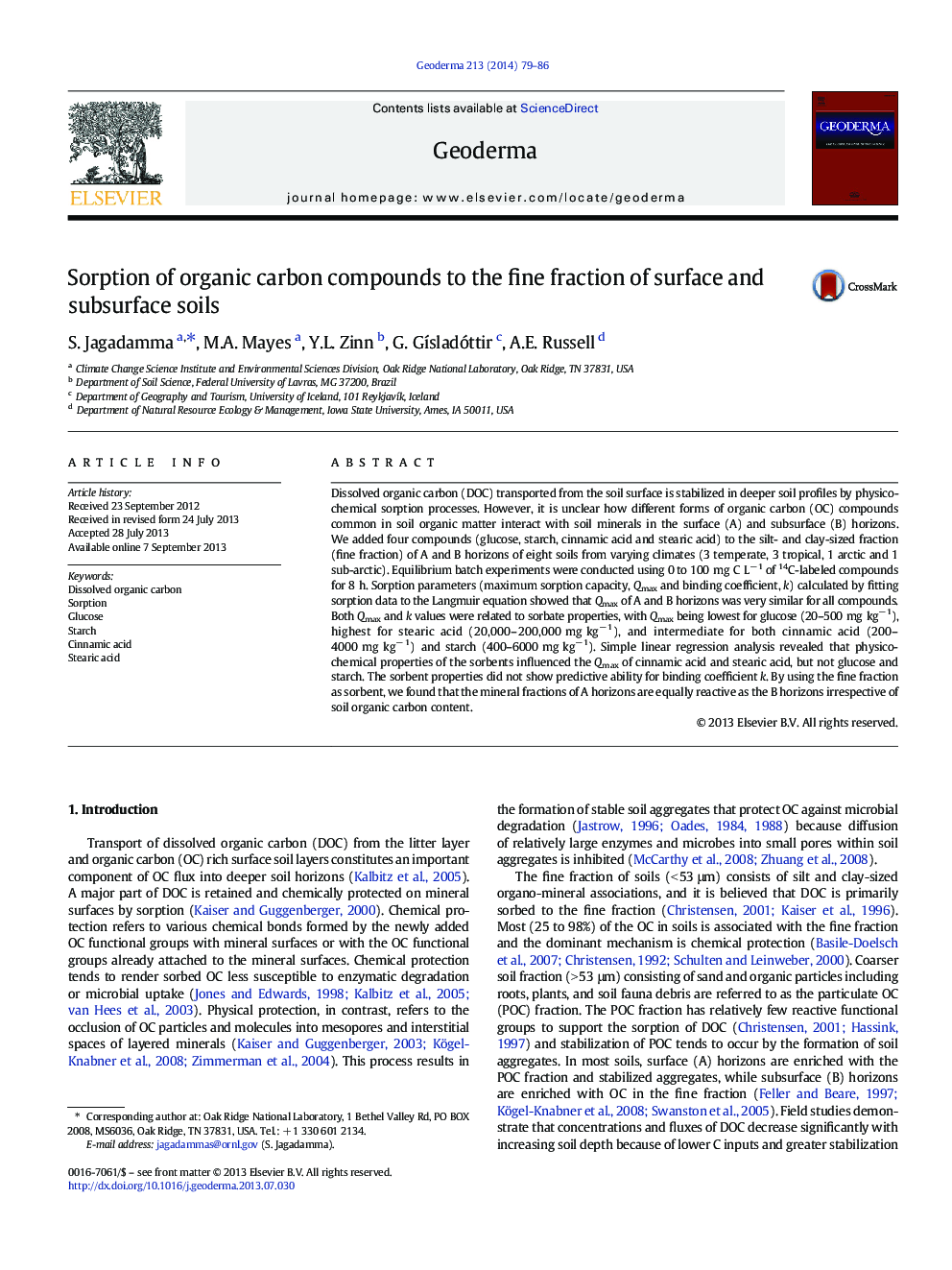| کد مقاله | کد نشریه | سال انتشار | مقاله انگلیسی | نسخه تمام متن |
|---|---|---|---|---|
| 6408929 | 1629479 | 2014 | 8 صفحه PDF | دانلود رایگان |
- Sorption of four organic carbon compounds on a suite of soils is conducted.
- Radiocarbon labeled compounds were used for accurate estimation of sorption.
- Sorption capacity of the fine fractions of A and B horizon were similar.
- Glucose exhibited the lowest and stearic acid exhibited the highest sorption.
Dissolved organic carbon (DOC) transported from the soil surface is stabilized in deeper soil profiles by physico-chemical sorption processes. However, it is unclear how different forms of organic carbon (OC) compounds common in soil organic matter interact with soil minerals in the surface (A) and subsurface (B) horizons. We added four compounds (glucose, starch, cinnamic acid and stearic acid) to the silt- and clay-sized fraction (fine fraction) of A and B horizons of eight soils from varying climates (3 temperate, 3 tropical, 1 arctic and 1 sub-arctic). Equilibrium batch experiments were conducted using 0 to 100 mg C Lâ 1 of 14C-labeled compounds for 8 h. Sorption parameters (maximum sorption capacity, Qmax and binding coefficient, k) calculated by fitting sorption data to the Langmuir equation showed that Qmax of A and B horizons was very similar for all compounds. Both Qmax and k values were related to sorbate properties, with Qmax being lowest for glucose (20-500 mg kgâ 1), highest for stearic acid (20,000-200,000 mg kgâ 1), and intermediate for both cinnamic acid (200-4000 mg kgâ 1) and starch (400-6000 mg kgâ 1). Simple linear regression analysis revealed that physico-chemical properties of the sorbents influenced the Qmax of cinnamic acid and stearic acid, but not glucose and starch. The sorbent properties did not show predictive ability for binding coefficient k. By using the fine fraction as sorbent, we found that the mineral fractions of A horizons are equally reactive as the B horizons irrespective of soil organic carbon content.
Journal: Geoderma - Volume 213, January 2014, Pages 79-86
